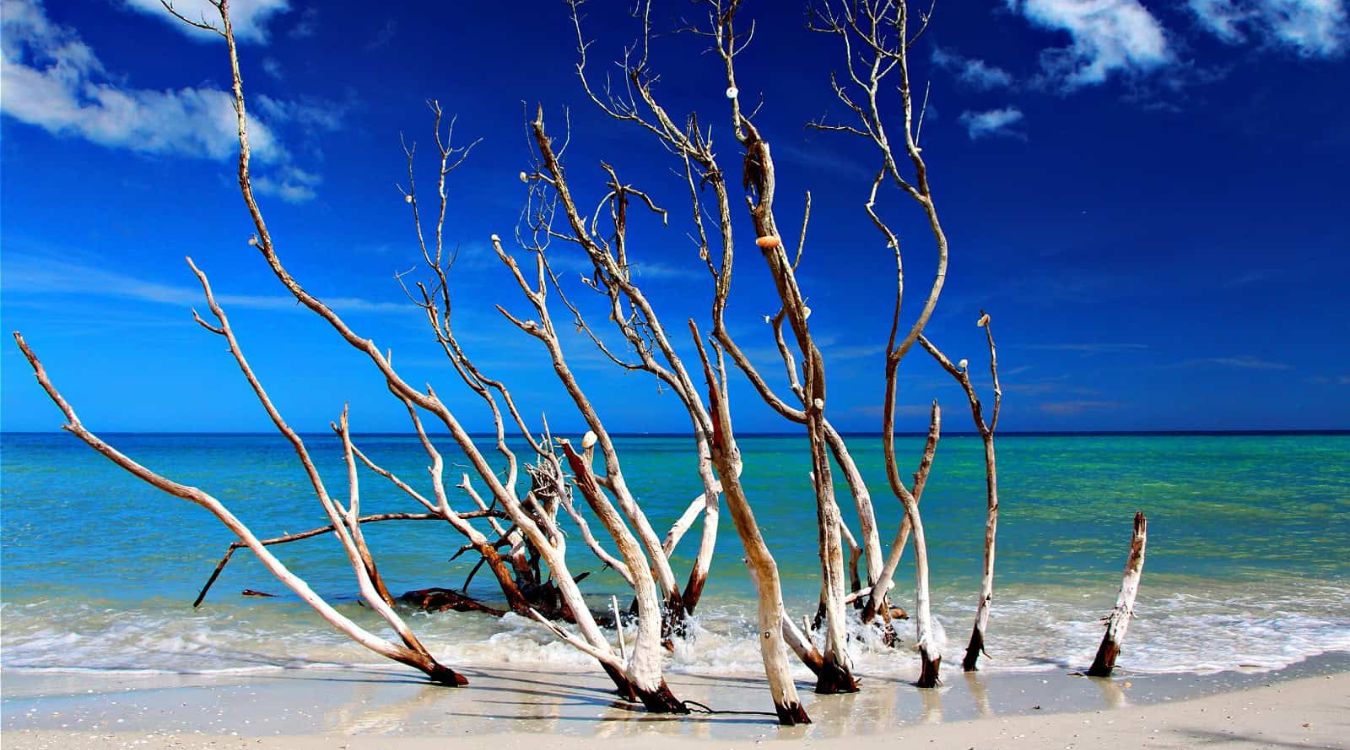Secrets Of Caladesi Island’s Barrier Island Ecology

Have you ever wondered what makes Caladesi Island's barrier island ecology so special? This hidden gem off Florida's Gulf Coast offers a unique blend of natural beauty and diverse wildlife. From mangrove forests to sandy dunes, the island's ecosystems support a variety of plants and animals. You might spot dolphins playing in the surf or see ospreys soaring overhead. The island's seclusion helps preserve its pristine condition, making it a perfect spot for nature lovers. Whether you're hiking the trails or kayaking through the mangroves, Caladesi Island provides a glimpse into the delicate balance of coastal ecosystems.
Discovering Caladesi Island's Unique Ecosystem
Caladesi Island, a hidden gem off Florida's Gulf Coast, offers a fascinating glimpse into the world of barrier island ecology. This pristine island, accessible only by boat or ferry, boasts diverse habitats and wildlife. Let's explore some of the island's most intriguing ecological features.
Mangrove Forests: Nature's Coastal Guardians
Mangrove forests play a crucial role in protecting coastal areas from erosion and providing habitat for various species. These unique trees thrive in salty, coastal waters and are essential to the island's ecosystem.
- Red Mangroves: Known for their distinctive prop roots, red mangroves stabilize shorelines and create a safe haven for fish and crustaceans.
- Black Mangroves: These trees have pneumatophores, or "breathing roots," that help them survive in oxygen-poor soils. They provide shelter for birds and marine life.
- White Mangroves: Found further inland, white mangroves have specialized glands to excrete excess salt. They support a variety of wildlife, including insects and birds.
Seagrass Beds: Underwater Meadows
Seagrass beds are underwater meadows that play a vital role in maintaining the health of coastal ecosystems. These submerged plants provide food and shelter for many marine species.
- Turtle Grass: This seagrass is a favorite food of sea turtles and manatees. Its dense roots help prevent erosion and maintain water quality.
- Manatee Grass: Named for the gentle giants that graze on it, manatee grass supports a diverse array of marine life, including fish and invertebrates.
- Shoal Grass: Often found in shallow waters, shoal grass provides habitat for juvenile fish and other small marine creatures.
Coastal Dunes: Natural Barriers
Coastal dunes are dynamic landscapes that protect inland areas from storm surges and provide habitat for specialized plants and animals. These sandy hills are constantly shaped by wind and waves.
- Sea Oats: These hardy grasses anchor dunes with their extensive root systems, preventing erosion and providing habitat for birds and insects.
- Beach Morning Glory: This flowering vine stabilizes dunes with its sprawling roots and attracts pollinators with its vibrant blooms.
- Sand Spurrey: A low-growing plant that thrives in sandy soils, sand spurrey helps stabilize dunes and provides food for small animals.
Maritime Hammocks: Island Forests
Maritime hammocks are dense forests found on higher ground within barrier islands. These unique habitats support a variety of plant and animal species.
- Live Oaks: These sturdy trees provide shade and shelter for many animals, including birds and mammals. Their acorns are a valuable food source.
- Cabbage Palms: Also known as sabal palms, these trees are Florida's state tree. They provide habitat for birds and insects and are an important part of the island's ecosystem.
- Saw Palmettos: These low-growing palms create dense thickets that provide cover for wildlife and help prevent soil erosion.
Tidal Flats: Rich Feeding Grounds
Tidal flats are areas of exposed mud or sand that are submerged at high tide and exposed at low tide. These habitats are rich feeding grounds for many species.
- Fiddler Crabs: These small crabs are easily recognized by their oversized claws. They play a crucial role in aerating the soil and recycling nutrients.
- Wading Birds: Species like herons and egrets forage in tidal flats, feeding on fish, crustaceans, and insects.
- Mollusks: Clams, oysters, and other mollusks thrive in tidal flats, filtering water and providing food for other animals.
Coastal Marshes: Wetland Wonders
Coastal marshes are wetland areas that are flooded by saltwater or brackish water. These habitats are incredibly productive and support a wide range of species.
- Spartina Grass: Also known as cordgrass, this plant dominates coastal marshes and provides habitat for many animals.
- Saltmarsh Snails: These small snails graze on algae and detritus, playing a key role in nutrient cycling.
- Marsh Rabbits: These small mammals are adapted to living in wetland areas and feed on a variety of marsh plants.
Caladesi Island's barrier island ecology is a testament to the resilience and diversity of nature. Each habitat, from mangrove forests to coastal marshes, plays a vital role in maintaining the health and balance of this unique ecosystem.
Embrace the Wonders of Caladesi Island
Caladesi Island offers a unique glimpse into barrier island ecology. Its pristine beaches, diverse wildlife, and lush mangroves create a natural paradise. Exploring this island reveals the delicate balance between land and sea, showcasing how plants and animals adapt to their environment. Whether you're hiking the trails, kayaking through mangrove tunnels, or simply relaxing on the beach, Caladesi Island provides a serene escape from everyday life.
Understanding the island's ecology helps us appreciate the importance of preserving such natural treasures. Each visit to Caladesi Island is a reminder of nature's beauty and resilience. So next time you plan a getaway, consider this hidden gem. You'll not only enjoy a peaceful retreat but also gain a deeper appreciation for the natural world.

